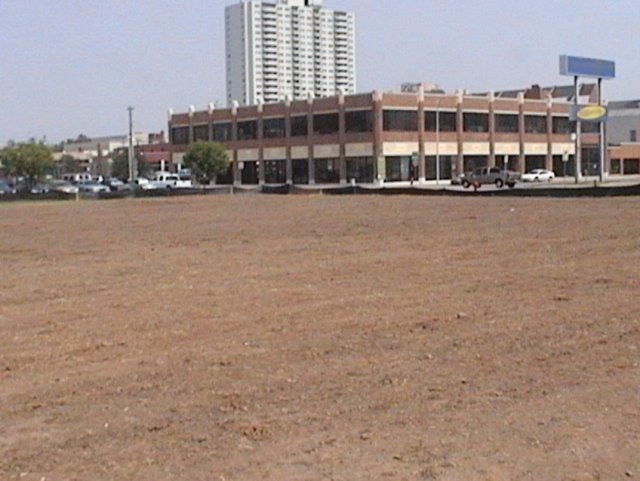Measuring Progress at Hazardous Waste Cleanups
The ultimate goal of the Hazardous Waste Cleanup Program is to achieve final cleanups. EPA sets goals and measures the intermediate success of the program using environmental indicators and other measures that mark progress toward national cleanup goals. These measures were established in accordance with the Government Performance Results Act of 1993 and are reported at the end of each fiscal year.
On this page:
- Fiscal Year 2024 Results
- What are Environmental Indicators?
- Final Remedies versus Environmental Indicators
- Final Remedy Construction and Performance Standards Attained
Fiscal Year 2024 Results
The Hazardous Waste Cleanup Program focused on continued progress implementing the five 2030 Program Goals and on cleaning up contamination at Resource Conservation and Recovery Act hazardous waste treatment storage and disposal facilities. We made significant progress toward the 2026 five-year long-term performance goal of 425 cleanups meeting the Ready for Anticipated Use milestone by surpassing the annual goal. Nationally, the program achieved the following targets:
- 22 cleanups met the Human Exposures Under Control target of 17.
- 25 cleanups met the Migration of Contaminated Groundwater Under Control target of 25.
- 40 cleanups met Remedy Construction, just under the target of 44.
- 42 cleanups met the Performance Standards Attained target of 41.
- 87 cleanups met the Ready for Anticipated Use target of 85.
What are Environmental Indicators?
Environmental Indicators are measures used by the Hazardous Waste Cleanup Program to track progress at hazardous waste cleanup sites in environmental terms. Environmental Indicators are a means of evaluating and reporting the acceptability of current environmental conditions at hazardous waste cleanup facilities. They also provide an opportunity for facilities and regulators to show meaningful progress. EIs are interim milestones and not final remedy or site closure goals.
EPA developed two EIs to indicate the quality of the environment during the corrective action process:
- The “Current Human Exposures Under Control” or Human Exposures EI ensures that people near a particular facility are not exposed to unacceptable levels of contaminants.
- The “Migration Of Contaminated Groundwater Under Control” or Groundwater EI ensures that contaminated groundwater does not spread and further contaminate groundwater resources.
Final Remedies Versus Environmental Indicators
While final cleanups or remedies remain the long-term objective of the Hazardous Waste Cleanup Program, the EIs are short-term objectives. The “Current Human Exposures Under Control” EI only considers human exposures under current land- and groundwater-use conditions and does not consider potential future use conditions or ecological receptors. Final remedies address long-term issues (e.g., potential future human exposure scenarios, future land and groundwater uses, and ecological receptors) to meet the Hazardous Waste Cleanup Program’s overall mission to protect human health and the environment.
Final Remedy Construction and Performance Standards Attained
EPA decided to prioritize corrective action facilities presenting the greatest risk to human health and the environment. Accordingly, initial program goals focused on these two EIs designed to stabilize the program's highest priority facilities. These EIs have now been satisfied at most of the highest-priority hazardous waste cleanup facilities.
As a result, the program expanded its focus to include two long-term measures:
- Final Remedy Construction.
- Performance Standards Attained.
Final Remedy Construction is met when a facility completes construction of the final remedy designed to achieve long-term protection of human health and the environment. This goal may be met even if final cleanup levels have not yet been reached, but the constructed final remedy must be sufficient to get towards those cleanup levels with time. For example, a constructed final remedy may be a groundwater treatment system that will ensure that groundwater meets cleanup goals with time.
Performance Standards Attained is met when the remedies that were selected for the protection of human health and the environment are fully implemented. Cleanup levels have been attained. This goal may be reached with or without controls in place or additional long-term stewardship actions in place to be sure human health and the environment remain protected in perpetuity.

In 2006, EPA developed the Ready for Anticipated Use measure to enable EPA and States to track cleanups determined to be protective for current and reasonably anticipated uses. The criteria for a facility or areas of a facility to meet the Ready for Anticipated Use Measure outlined in the Cross-Program Revitalization Measures Guidance are:
- Criteria for Protective for People under Current Conditions as been met (now known as Human Exposures Under Control (CA725)).
- Cleanup goals have been achieved for media that may affect current and reasonably anticipated future land uses of the facility so that there are no unacceptable risks.
- All institutional or other controls, identified as part of a response action or remedy as required to help ensure long-term protection, are in place.
For additional information, check out our Guidance for Documenting and Reporting Resource Conservation and Recovery Act Subtitle C Corrective Action Land Revitalization Indicators and Performance Measures (pdf) .
